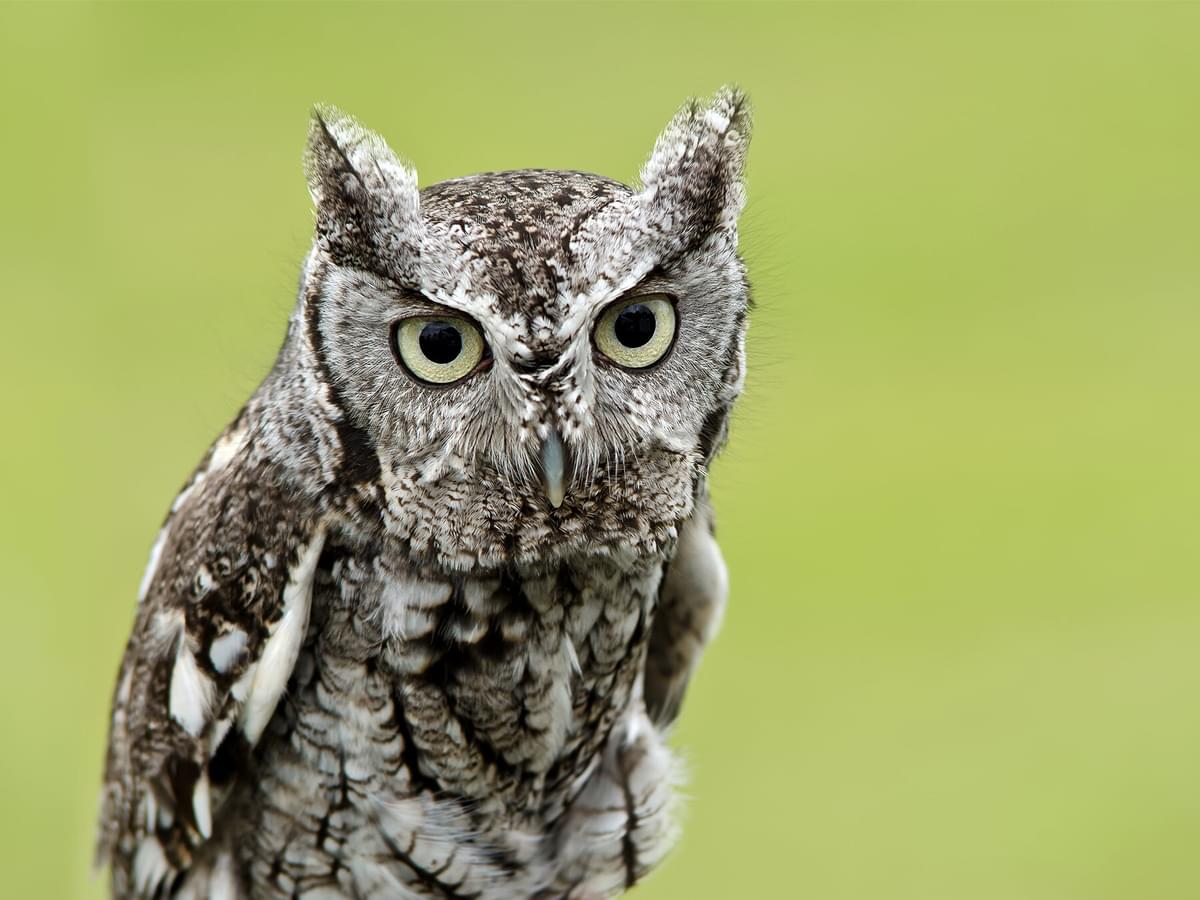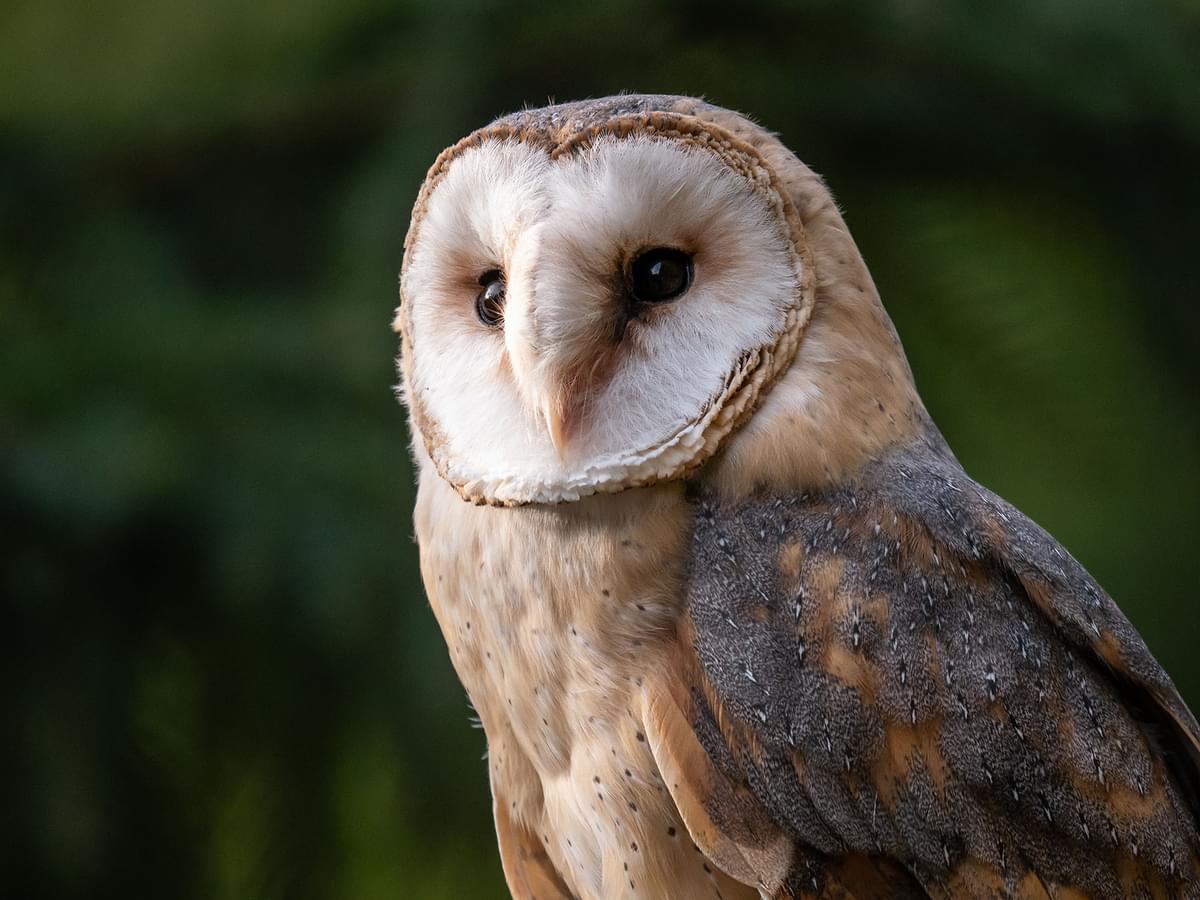Jump to Section
Types of Owls in Arkansas (Complete Guide)
Last updated: 19 November 2021

With over 600,000 acres of lakes, Arkansas is a diverse habitat ranging from beautiful hot springs, rivers, and lakes, to forests, swamps, prairies, suburbs, and urban areas. With such undeveloped space, it is the ideal location for a diversity of bird species, especially owls. With such a large owl population, you may be wondering, what owls can be found in Arkansas?
Nine owl species are found in the “Natural State” of Arkansas, including the Barn Owl, Barred Owl, Burrowing Owl, Eastern Screech-Owl, Great Horned Owl, Long-eared Owl, Northern Saw-whet Owl, Short-eared Owl, and Snowy Owl. Several of these owl species are permanent residents, while others are much rarer and can be only spotted seasonally.
Keep reading to find out more about these fascinating creatures!
Did you know?
The list of owls below has been compiled from historical sighting reports from various sources. Whilst some of the birds listed are uncommon and hard to spot, we've still included them as they are sometimes seen still in Arkansas.
Barn Owl
Tyto alba

Length:
33cm to 39cm
Wingspan:
80cm to 95cm
Weight:
430g to 620g
Seen :
Uncommon, but rarely seen during winter.
Barn Owl
You can spot a Barn Owl year-round across the entire state of Arkansas but are difficult to see. You can identify a Barn Owl by its heart-shaped facial disk, smaller eyes, bare toes, long legs, serrated claws, and short, square tails. Their body color ranges from yellowish-gold to cinnamon.
Barn Owls got their name because of nesting in manmade structures, like barns, where they can spot small rodents for dinner. They typically live in structures on farms or in other rural areas, so it is uncommon to see them in cities or suburbs.
Eastern Screech-Owl
Megascops asio
Length:
16cm to 25cm
Wingspan:
48cm to 61cm
Weight:
170g to 190g
Seen :
All year
Eastern Screech-Owl
As a permanent year-round resident of Arkansas across the state (in most habitats), the Eastern Screech-owl is a small but powerful bird that is about the size of a robin. Their primary diet includes songbirds, rodents, and various insect types. As highly camouflaged birds, they blend well with the surrounding forests so they can swoop down to catch their prey.
If you hear the songbirds fussing and displaying a predator alarm, there could be an Eastern Screech-owl nearby. You can identify the Eastern Screech-Owl by its reddish body with black facial disks, ear tufts, spotted white shoulders, and blotchy-streaked stomachs.
Great Horned Owl
Bubo virginianus
Length:
46cm to 63cm
Wingspan:
140cm
Weight:
910g to 2.5kg
Seen :
All year
Great Horned Owl
Another permanent year-round resident of Arkansas, the Great Horned Owl is the largest in the state and the most common in North America. They are exactly what we picture when thinking of owls because they are incredibly photogenic. You can recognize these beautiful birds by their yellow eyes, ear tufts, and generous size.
They are the only known bird on Earth that catches and eats skunks but also prays on rodents. They are considered fierce predators and enemies to the Red-tailed Hawk. They can live in a variety of habitats ranging from backyards to forests, so Arkansas is the ideal location to spot one.
Snowy Owl
Bubo scandiacus
Length:
53cm to 66cm
Wingspan:
125cm to 166cm
Weight:
710g to 2.95kg
Seen :
Rare, but winter is most likely
Snowy Owl
The graceful and magnificent Snowy Owl is rare for Arkansas and can only be spotted in December or January, but they are pretty rare to come across in Arkansas, but there are historical reports. Since they breed in colder climates, they only come south for two months before returning home.
You can find the Snowy Owl in fields, prairies, beaches, dunes, and marshes. Called the snowy owl because of its pure white feathers that camouflage the bird in the Arctic, this owl nests close to lemmings and other small rodents. However, the Snowy Owl has been known to prey on birds as large as geese.
Burrowing Owl
Athene cunicularia
Length:
19cm to 25cm
Wingspan:
51cm to 61cm
Weight:
170g
Seen :
Uncommon, but between September and April
Burrowing Owl
The second you see the rhythmic head nod; you will know this is a Burrowing Owl. This species is a favorite among bird trackers because of its unique appearance and behavior. They can be found in open country environments and are among the smallest owl species. You can recognize them by their pale brown feathers with white spots. The more spots the owl has, the older it typically is.
Their tails are short and square, and their eyes are a piercing sharp yellow color. When hunting in the day or night, their diet consists of large insects, reptiles, rodents, and fish.
The best time to spot the Burrowing Owl in Arkansas is between September and April, however, they can be fairly rare and uncommon to see.
Barred Owl
Strix varia
Length:
43cm to 50cm
Wingspan:
31.5cm to 35.5cm
Weight:
470g to 1.05kg
Seen :
All year
Barred Owl
With a stable population throughout Arkansas, you can observe Barred Owls year-round during the day, but can sometimes be challenging to spot. They can quickly be identified by their call that sounds like, “Who cooks for you, Who cooks for you all?” You will recognize this species by their mottled brown and white marks on their tail and wings. They have unsettling black eyes with pale dark streaks.
The Barred Owl is a non-migratory bird that nests in tree cavities or nest boxes and lives in forests. Their biggest predator is the Great Horned Owl, but they eat small rodents and insects.
Long-eared Owl
Asio otus

Length:
35cm to 40cm
Wingspan:
90cm to 100cm
Weight:
220g to 435g
Seen :
Uncommon, but mostly October to April
Long-eared Owl
True to its name, the Long-eared Owl is a medium-sized species that are uncommon in Arkansas. Your best chance to view this bird is between October and April.
It is difficult to spot one because they breed in the northern U.S. and Canada plus, they are stealthy flyers. This makes the Long-ear Owl an excellent nocturnal hunter of mice, rats, other rodents, and insects. They prefer living near the open ground, like fields and marshes, so they can hunt. You can recognize this species by their long ears, sharp yellow eyes, rounded facial disk, spotted underbelly, and striped wings.
Short-eared Owl
Asio flammeus

Length:
34cm to 43cm
Wingspan:
85cm to 110cm
Weight:
206g to 475g
Seen :
October to April
Short-eared Owl
The best time to spot the Short-eared Owl in Arkansas is in winter when they are not breeding. They typically arrive in October and leave at the end of March, early February. You can commonly find them in brushy areas or open fields around dusk or dawn during their hunting trips.
Interestingly, the Short-eared Owl can be found sitting on the ground waiting for prey. This species can be identified by their short ears, yellow eyes, rounded facial disk, and brown and white patterned feathers.
Northern Saw-whet Owl
Aegolius acadicus
Length:
18cm to 21.5cm
Wingspan:
45cm to 60cm
Weight:
100g
Seen :
Between October and February, but rare
Northern Saw-whet Owl
As one of the smallest birds of prey in the United States and smallest owl in Arkansas, the Northern Saw-whet Owl is rare but may be seen between October and February. However, they are listed on the threatened list in the state, so you may never, unfortunately, see one, as they are becoming rarer.
This species is nocturnal, so they hunt in the forest exceedingly small rodents and insects at night. Unlike other owls, this species consumes mice and other rodents over two meals. They earned the name because their call sounds like a saw being sharpened on a whetting stone.

